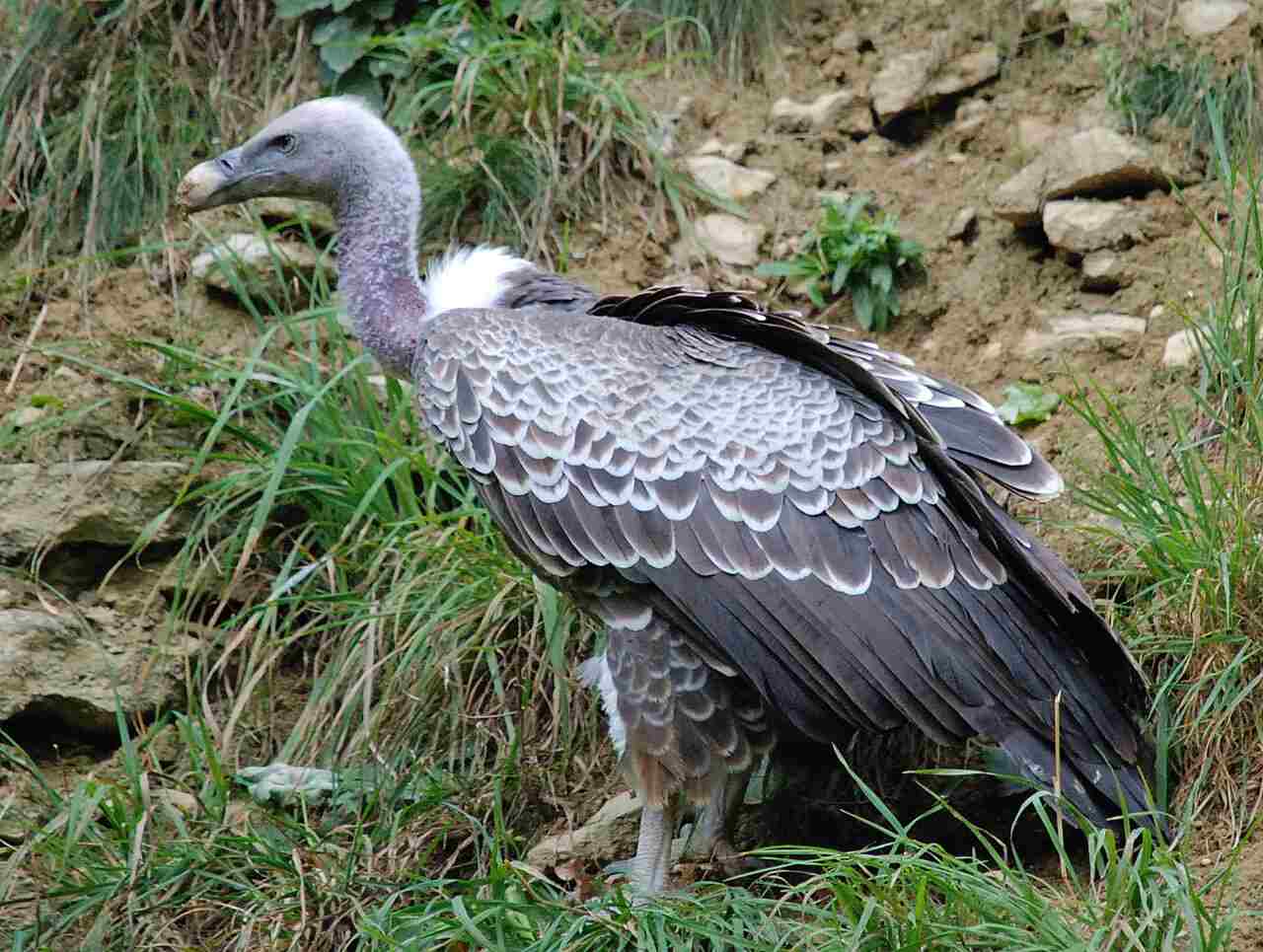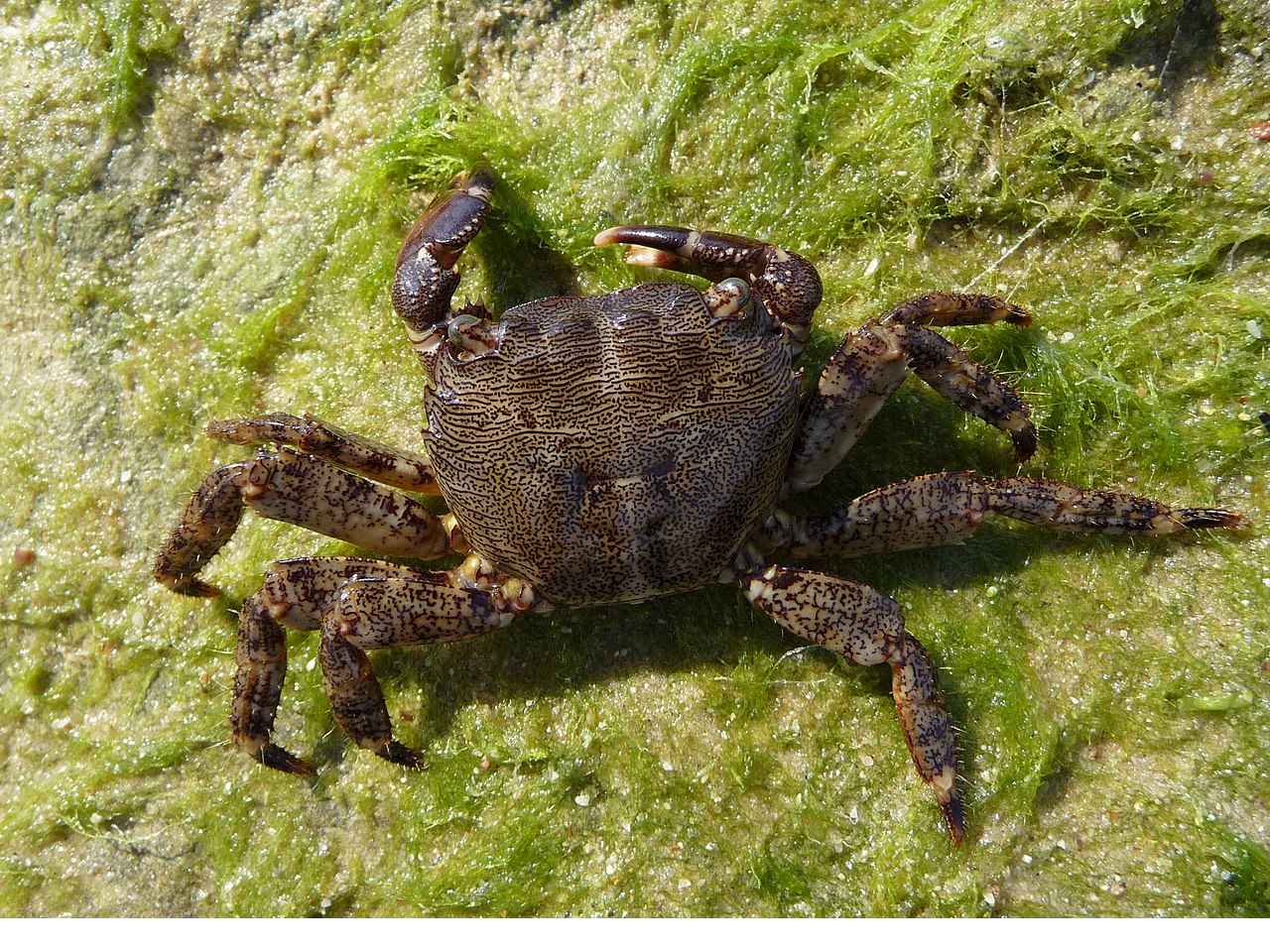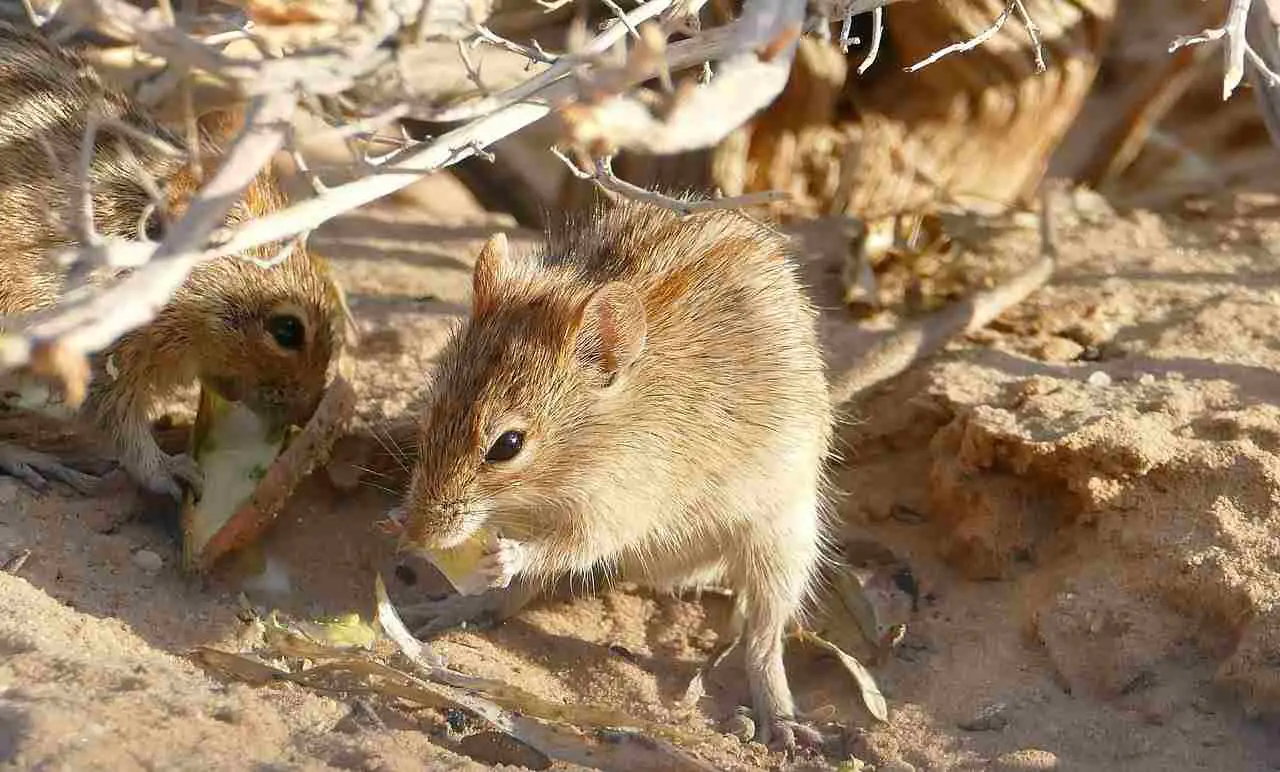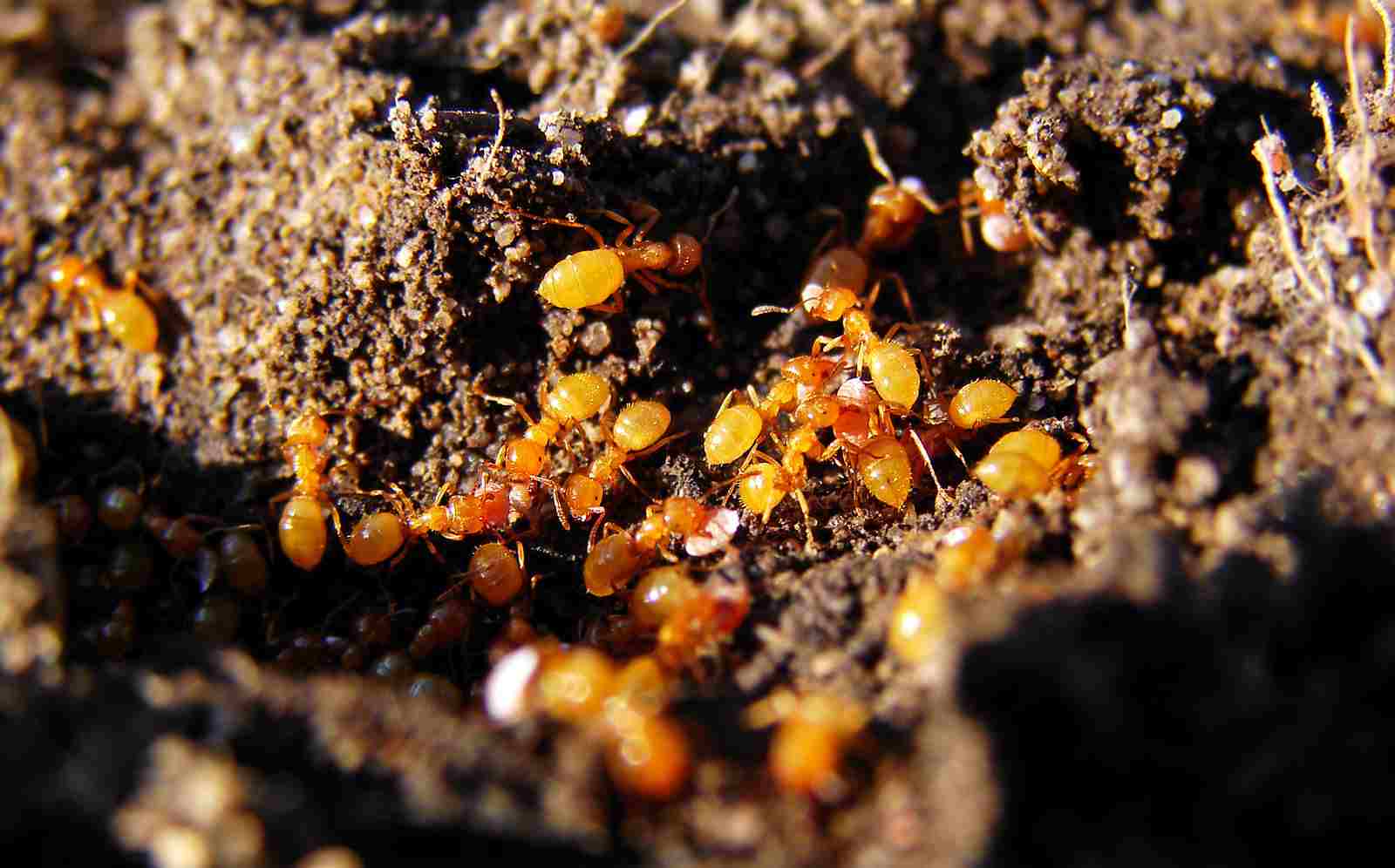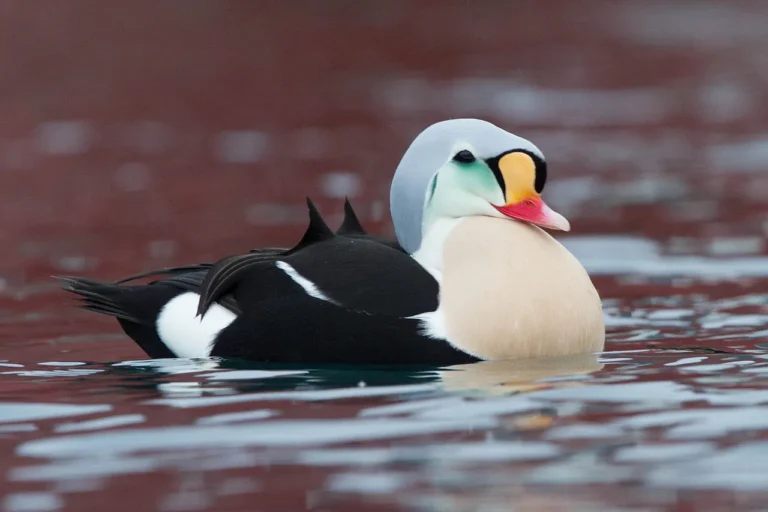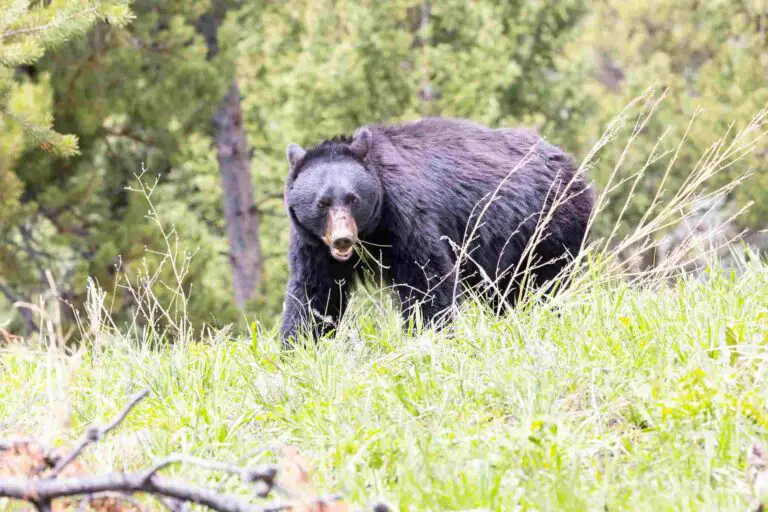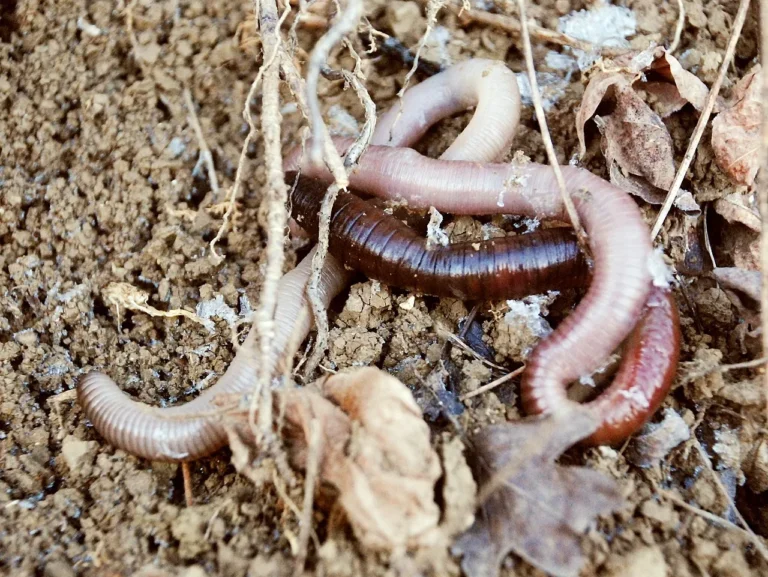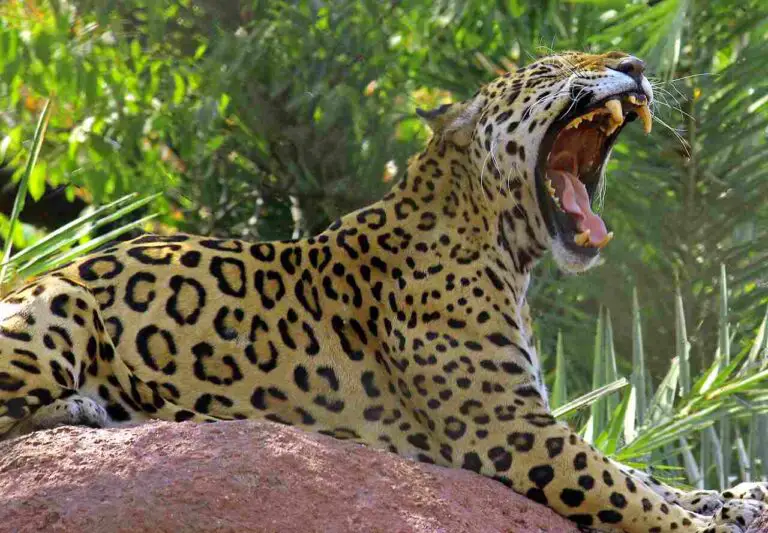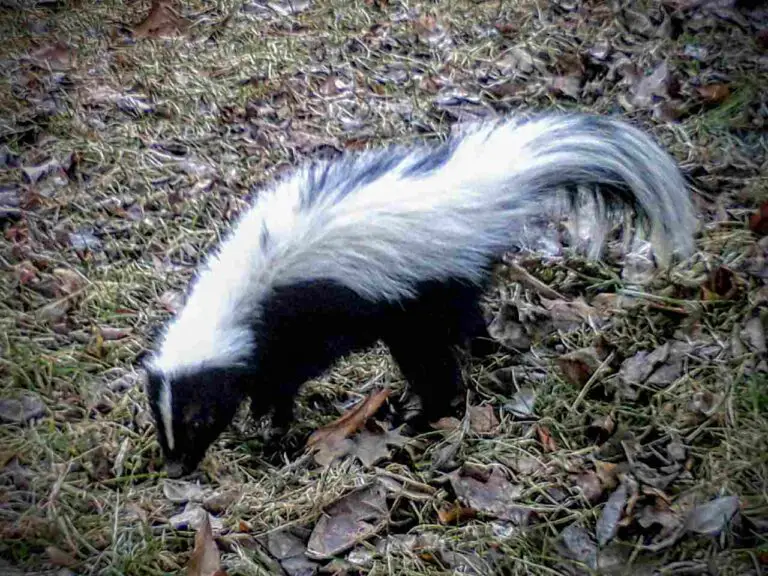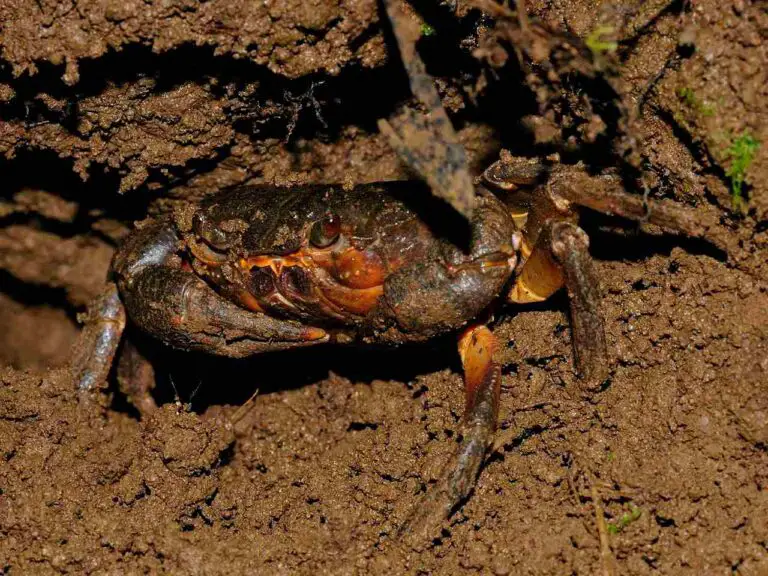What Do Tadpoles Eat? Exploring the Diet of Tadpoles
Some of the things that tadpoles eat include blood worms, aphids, algae, aquatic macrophytes, insect larvae, other tadpoles, and organic waste in the form of fecal matter and granular remains of dead organisms. This article provides more detail in response to the question; “what do tadpoles eat?” and also answers related queries.
What Do Tadpoles Eat in the Wild?
Tadpoles are highly versatile consumers with a primarily herbivorous diet. In the wild, tadpoles can consume a variety of food sources to meet their nutritional needs. These include blood worms, aphids, algae, aquatic macrophytes, insect larvae, other tadpoles, and organic waste in the form of fecal matter and granular remains of dead organisms.
It is important to note that the specific components of a tadpole’s diet can vary depending on the particular species. Different species of tadpoles may have different preferences and requirements when it comes to their food sources. Some tadpoles may have a preference for algae and aquatic plants, while others may rely more on insect larvae and other small aquatic organisms.
When it comes to feeding tadpoles in captivity, it’s crucial to avoid providing them with food materials that attempt to mimic the diet of wild tadpoles. While it may seem logical to replicate their natural diet, doing so can actually have harmful effects and pose risks to their survival. Tadpoles in captivity should be provided with a balanced and appropriate diet that meets their nutritional needs without compromising their health.
Feeding tadpoles in captivity can be done using commercially available tadpole food. These specialized foods are formulated to provide the necessary nutrients for healthy growth and development. They often contain a combination of plant matter, protein, vitamins, and minerals that mimic the natural diet of tadpoles.
In addition to commercial tadpole food, other suitable food options for captive tadpoles include boiled lettuce, spinach, or kale. These leafy greens can be finely chopped or pureed to make them easier for the tadpoles to consume. It’s important to ensure that any food provided is free from pesticides or other harmful chemicals that could be detrimental to the tadpoles’ health.
What Do Tadpoles Eat Naturally?
What tadpoles eat naturally is the same as what they consume in the wild. Tadpoles have a versatile diet that mainly consists of herbivorous food sources. In their natural habitat, tadpoles can feed on a variety of food to meet their nutritional needs.
One of the main components of a tadpole’s natural diet is soft plant matter. Tadpoles are known to consume plants such as pondweed, milfoil, duckweed, partially decomposed lilies, algae, and moss. These plants provide essential nutrients and fiber for the tadpoles’ growth and development.
In addition to plant matter, tadpoles in the wild also consume other food sources. This can include blood worms, aphids, insect larvae, other tadpoles, and organic waste in the form of fecal matter and granular remains of dead organisms. These additional food sources contribute to the tadpoles’ overall nutrition and help them thrive in their natural environment.
It’s important to note that the specific components of a tadpole’s diet can vary depending on the species. Different species of tadpoles may have different preferences and requirements when it comes to their food sources. Some tadpoles may have a preference for algae and aquatic plants, while others may rely more on insect larvae and other small aquatic organisms.
Understanding what tadpoles eat naturally is helpful when it comes to providing them with a suitable diet in captivity. By replicating their natural diet as closely as possible, we can ensure that captive tadpoles receive the necessary nutrients for healthy growth and development.
What Plants Do Tadpoles Eat?
Tadpoles have a diverse diet when it comes to plant matter. In the wild, they primarily consume soft plant matter such as pondweed, milfoil, duckweed, partially decomposed lilies, algae, and moss. These plants provide essential nutrients and fiber for the tadpoles’ growth and development. However, when it comes to tadpoles in captivity, their diet may include other plant options.
In captivity, tadpoles can also consume plants like broccoli, spinach, and lettuce. These plants are relatively soft and fibrous, making them suitable for tadpoles to eat. Including these plant options in their diet ensures that captive tadpoles receive a balanced nutritional intake.
It is helpful to note that the specific plant preferences of tadpoles can vary depending on the species. Some tadpoles may have a preference for algae and aquatic plants, while others may rely more on softer terrestrial plants. Providing a variety of plant options can help cater to the specific dietary needs of different tadpole species.
Can tadpoles Eat Grass?
While tadpoles primarily consume softer plant matter like the foliage of duckweeds, grass is not a main part of their diet. The tissues of grasses are often too tough for easy consumption, and grasses are not always accessible within tadpole habitats.
Instead, tadpoles may opt for other monocots like duckweed, which are softer and more abundant. However, grasses still play a role in tadpole nutrition. Tadpoles may occasionally feed on exposed fibrous grass roots in the sediments, and they may also use grass fronds as anchors for attachment.
When it comes to plant consumption, tadpoles mainly target leaves. Leaves are softer and more abundant or massive compared to other parts of plants.
This makes them easier for tadpoles to consume and provides them with the necessary nutrients for growth and development. While grass may not be a significant part of their diet, tadpoles still interact with grasses in various ways, utilizing them for different purposes within their habitat.
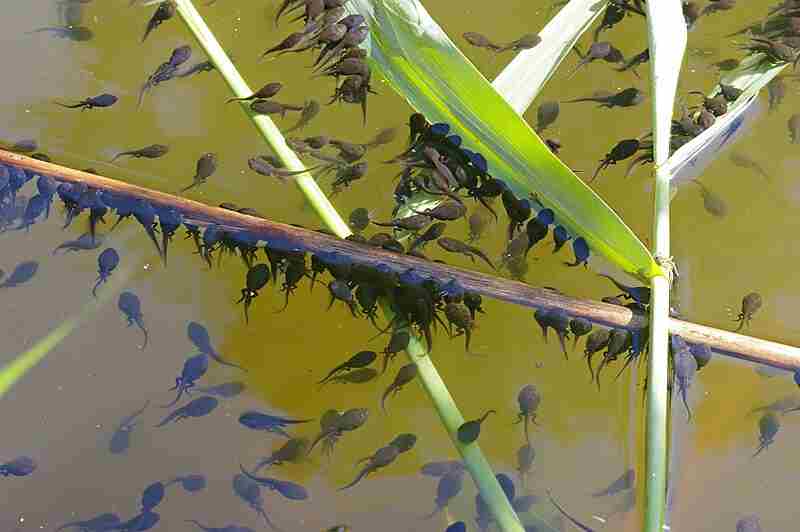
What Do Tadpoles Eat?: Grass is Both a Potential Food Source and a Means of Anchorage for Tadpoles (Credit: Christian Fischer 2009 .CC BY-SA 3.0.)
Do Tadpoles Eat Duckweed?
As we have already mentioned, duckweed is a major part of a tadpole’s diet in the wild, particularly in areas where this plant is abundant. Duckweed provides a nutritious food source for tadpoles, as its fibers can be easily masticated and digested.
Duckweed, also known as Lemnaceae, is a small aquatic plant that floats on the surface of still or slow-moving water bodies. It is characterized by its small, round leaves and rapid growth rate. Tadpoles are attracted to duckweed due to its accessibility and high nutritional value.
The fibers of duckweed contain essential nutrients that tadpoles need for their growth and development. These nutrients include proteins, carbohydrates, and vitamins. Tadpoles are able to extract these nutrients by masticating the fibers of the duckweed, breaking them down into smaller particles that can be easily absorbed by their digestive system.
In addition to its nutritional value, duckweed also provides tadpoles with a suitable habitat. The dense coverage of duckweed on the water’s surface offers protection and shelter for tadpoles, shielding them from predators and providing a safe environment for them to grow.
While duckweed is a staple food for tadpoles, it is important to note that they do consume other plant matter as well. Tadpoles may also feed on softer plant materials such as algae, aquatic plants, and decaying organic matter. However, duckweed remains a primary food source due to its abundance and nutritional content.
Therefore, tadpoles do eat duckweed as a major part of their diet in the wild. Duckweed provides essential nutrients and serves as a suitable habitat for tadpoles to thrive.
By consuming the fibers of duckweed, tadpoles are able to obtain the necessary nutrients for their growth and development. So, when raising tadpoles, providing them with a steady supply of duckweed can ensure their healthy development.
Do Tadpoles Eat Mosquito Larvae?
Tadpoles can consume mosquito larvae under some circumstances, which include when the water body is overpopulated with mosquito larvae and they are competing directly with tadpoles for space. In such cases, tadpoles may resort to eating mosquito larvae as a means of survival.
Since tadpoles are primarily herbivorous, they do not typically prey on mosquito larvae. However, there are certain circumstances in which tadpoles may consume these smaller organisms.
It is important to note that tadpoles are more likely to consume mosquito larvae as they grow older and develop into their carnivorous adult stage. As tadpoles undergo metamorphosis and transition into frogs, their diet changes to include more protein-rich foods, such as insects and small aquatic animals. Mosquito larvae, being small and easily accessible, may be consumed by tadpoles during this transitional phase.
However, it is crucial to understand that tadpoles primarily rely on a herbivorous diet, feeding on plant matter such as algae, aquatic plants, and decaying organic matter.
These food sources provide the necessary nutrients for their growth and development. Mosquito larvae are not a regular part of their diet and are only consumed under specific circumstances.
Drawing from the above, while tadpoles are primarily herbivorous, they may eat mosquito larvae in certain situations, such as when the larvae are overpopulated and competing with tadpoles for space. However, this is not a common occurrence, and tadpoles mainly rely on plant matter for their nutritional needs.
What to Feed Tadpoles
Some of the materials that can be used to feed tadpoles include bread, hard-boiled egg yolk, algae wafers, cucumber, broccoli, spinach, and lettuce. These food options provide a variety of nutrients that tadpoles need to thrive.
Tadpoles have specific dietary needs that must be met in order for them to grow and develop properly. While they are primarily herbivorous, there are several materials that can be used to feed tadpoles and ensure they receive the necessary nutrients for their growth.
In addition to these options, it is also recommendable to allow algae and aquatic plants to grow to manageable levels in your pond if it is outdoors and large enough. Algae and aquatic plants serve as natural food sources for tadpoles, providing them with essential nutrients and fiber.
It is important to note the importance of providing a balanced diet. Tadpoles require a combination of plant matter and protein-rich foods for optimal development. Therefore, it is advisable to supplement their diet with small amounts of protein sources, such as fish food or mosquito larvae, if available.
By providing a varied and balanced diet, you can ensure that tadpoles receive the necessary nutrients for their growth and development. Remember to monitor their feeding habits and adjust their diet accordingly as they transition into frogs.
1. Do Tadpoles Eat Fish Food?
Tadpoles can indeed eat fish food as a viable source of protein. Fish food typically contains high levels of protein, which is essential for the growth and development of tadpoles. However, it is important to note that fish food should not be the sole component of a tadpole’s diet.
While fish food provides protein, it lacks several other important nutrients and fibers that tadpoles need for optimal development. Therefore, it is recommended to use fish food as a last resort or as a supplement to a varied and balanced diet.
A varied diet for tadpoles should include a combination of plant matter and protein-rich foods. This can include options such as bread, hard-boiled egg yolk, algae wafers, and vegetables like cucumber, broccoli, spinach, and lettuce. These food options provide a range of nutrients that tadpoles require for their growth and development.
Offering a diverse diet helps tadpoles receive the necessary nutrients they need to thrive. It is important to monitor their feeding habits and adjust their diet accordingly as they transition into frogs. Providing a balanced diet will ensure that tadpoles have the best chance of developing into healthy adult frogs.
2. Can Tadpoles Eat Cucumber?
Tadpoles can indeed eat cucumber as part of their diet. Cucumber contains similar nutritional content to several natural food materials that tadpoles consume in the wild.
However, it is important to note that tadpoles may have difficulty consuming cucumber in its raw form. To make it easier for them to eat, it is recommended to soften the cucumbers by boiling or steaming them before offering them to the tadpoles.
In addition, it is beneficial to combine cucumber with other food materials to provide a more balanced diet for the tadpoles. This can include options such as algae wafers, bread, or vegetables like spinach and lettuce. By offering a variety of food options, tadpoles can receive a wider range of nutrients necessary for their growth and development.
When feeding cucumber to tadpoles, it is important to monitor their feeding habits and adjust the amount accordingly. Uneaten cucumber should be removed from the water to prevent it from decomposing and affecting the water quality.
Providing a varied and balanced diet, including cucumber, will help ensure that tadpoles have the necessary nutrients to thrive and develop into healthy adult frogs.
In the next section, we will explore whether tadpoles can live in stagnant water and the ideal conditions for their development.
Can Tadpoles Live in Stagnant Water?
While tadpoles can survive in stagnant water bodies like shallow ponds, it is not ideal for their development.
To ensure the best conditions for their growth, it is recommended to provide them with unpolluted water from natural sources such as rainfall, streams, rivers, and creeks. These water sources contain essential nutrients and microorganisms that tadpoles need for their development.
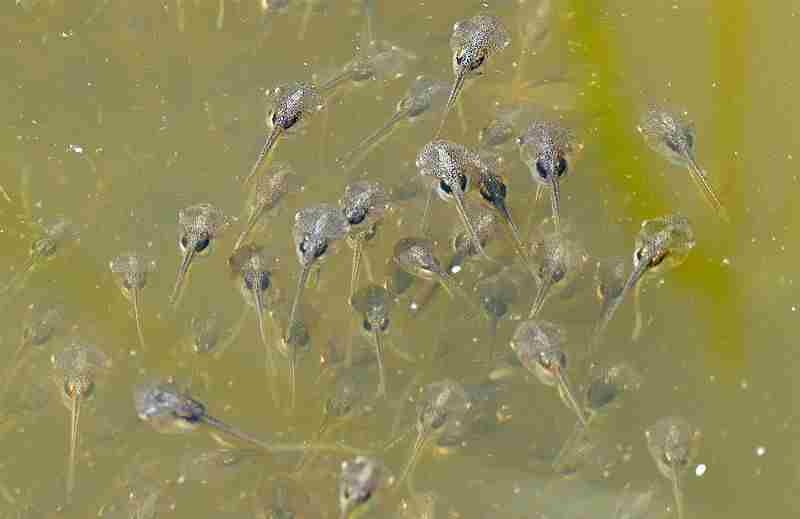
What Do Tadpoles Eat?: Although Tadpoles Can Survive in Stagnant Water, It is Not an Ideal Environment for Them (Credit: Bernard DUPONT 2015 .CC BY-SA 2.0.)
In addition to using natural water sources, it is beneficial to use an aerator in the tadpole habitat.
An aerator helps to increase oxygen levels in the water, which is crucial for the tadpoles’ respiration and overall health. It also helps to prevent the water from becoming stagnant and promotes the growth of beneficial microorganisms.
Occasional water changing is also recommended to maintain water quality. This involves replacing a portion of the water in the habitat with fresh, clean water. It helps to remove any accumulated waste or toxins and ensures a healthier environment for the tadpoles.
It is important to note that distilled water and tap water are not recommended for tadpoles. Distilled water lacks essential minerals and nutrients, while tap water may contain chlorine or other chemicals that can be harmful to the tadpoles.
However, clean tap water can be used after it has been exposed to solar radiation for a period of between a few days to a week. This helps to dissipate any harmful substances and make the water safer for the tadpoles.
By providing tadpoles with clean, oxygenated water from natural sources and implementing proper water management techniques, their chances of survival and healthy development are greatly enhanced.
How Long Do Tadpoles Take to Grow?
Tadpoles undergo a fascinating transformation as they grow into frogs.
The length of time it takes for tadpoles to develop into frogs can vary depending on the species and environmental factors. On average, it takes about 16 weeks for frogspawn to hatch and for young frogs to leave the pond. From the moment a tadpole hatches, it takes approximately 14 weeks for it to complete its metamorphosis and become a frog.
During the early stages of development, tadpoles go through significant changes. They typically transform into froglets within 9-12 weeks, developing limbs and absorbing their tail. Over the next few weeks, they continue to grow and develop until they reach their full frog form, which usually takes around 12-16 weeks.
It is important to note that the specific duration of growth and development can vary depending on the species of tadpole and the temperature of their environment. Warmer temperatures generally accelerate the development process, while cooler temperatures can slow it down.
A knowledge of the timeline of tadpole growth is essential for those who are raising tadpoles or observing them in the wild.
When to Start Feeding Tadpoles
The time to start feeding tadpoles is about 6 days after hatching, provided materials like algae are present in their habitat or enclosure.
Tadpoles have specific dietary needs that change as they grow and develop. While they are in the early stages of their lives, tadpoles can survive on algae, which provides them with essential nutrients.
In fact, if there is an abundant supply of algae in their environment, tadpoles can rely on it as their primary food source for the first six to seven days of their lives. During this time, they are still developing the necessary digestive adaptations for robust herbivorous feeding.
However, as tadpoles approach maturity at around six weeks, their dietary requirements change. At this stage, they start to exhibit carnivorous feeding behaviors and require additional food materials to support their growth. Bugs and other small invertebrates can be introduced into their diet to provide them with the necessary protein and nutrients. These food materials serve as a good addition to their diet until they reach adulthood, which typically occurs between 12 to 16 weeks.
It is important to note that the timing of when to start feeding tadpoles can vary depending on the species and environmental conditions. Observing the tadpoles closely and monitoring their growth and behavior can help determine the appropriate time to introduce supplementary food.
What Do Tadpoles Need to Survive
What tadpoles need to survive include; relatively warm water, stable water quality (with no chlorine), moderate sunlight exposure, pondweed, algae, other food materials, stones and/or plants for anchorage.
1. Firstly, tadpoles need relatively warm water to thrive. They are ectothermic creatures, meaning their body temperature is regulated by the temperature of their surroundings. Tadpoles prefer water temperatures between 70 to 80 degrees Fahrenheit (21 to 27 degrees Celsius) for optimal growth and development.
2. Secondly, it is important to provide tadpoles with stable water quality that is free from chlorine. Chlorine can be harmful to tadpoles and can even be fatal in high concentrations. If using tap water, it is essential to treat it with a dechlorinator before introducing tadpoles to their habitat.
3. Moderate sunlight exposure is also necessary for tadpoles. Sunlight helps to promote the growth of algae, which is a vital food source for tadpoles. However, excessive sunlight can lead to overheating and the depletion of oxygen in the water, so it is important to strike a balance.
4. In terms of food, tadpoles require a variety of food materials to meet their nutritional needs. Pondweed is an excellent choice as it provides both shelter and food for tadpoles. Algae, as mentioned earlier, is a primary food source for tadpoles, especially in the early stages of their development. Additionally, introducing other food materials such as boiled lettuce or fish food can help supplement their diet.
5. Tadpoles also need stones and/or plant matter for anchorage. These provide them with a place to rest and hide from predators. The stones or plant matter should be arranged in a way that creates a suitable habitat for tadpoles to explore and seek shelter.
Providing tadpoles with these essential elements creates a suitable environment for their survival and growth. Remember to monitor their behavior and growth closely to ensure they are thriving.

